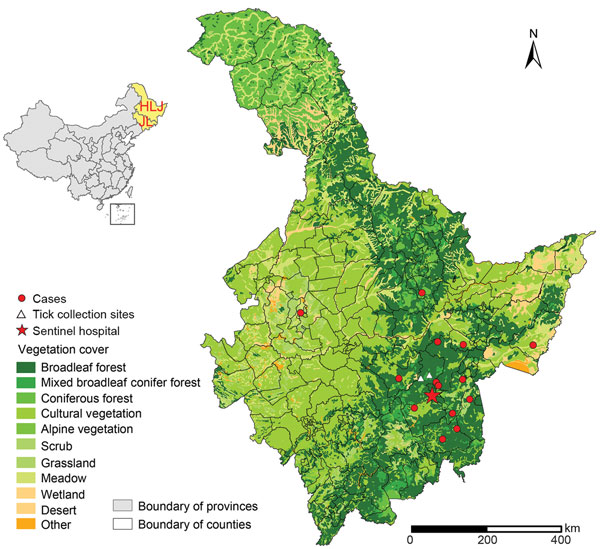Volume 24, Number 2—February 2018
Research
Borrelia miyamotoi Infections in Humans and Ticks, Northeastern China
Figure 1

Figure 1. Geographic distribution of patients with Borrelia miyamotoi infection, northeastern China, May 2013–June 2015. Red dots (cases) indicate locations of case-patients’ residences. Inset map shows location of study area in China. HLJ, Heilongjiang Province; JL, Jilin Province.
1These authors contributed equally to this article.
Page created: January 17, 2018
Page updated: January 17, 2018
Page reviewed: January 17, 2018
The conclusions, findings, and opinions expressed by authors contributing to this journal do not necessarily reflect the official position of the U.S. Department of Health and Human Services, the Public Health Service, the Centers for Disease Control and Prevention, or the authors' affiliated institutions. Use of trade names is for identification only and does not imply endorsement by any of the groups named above.